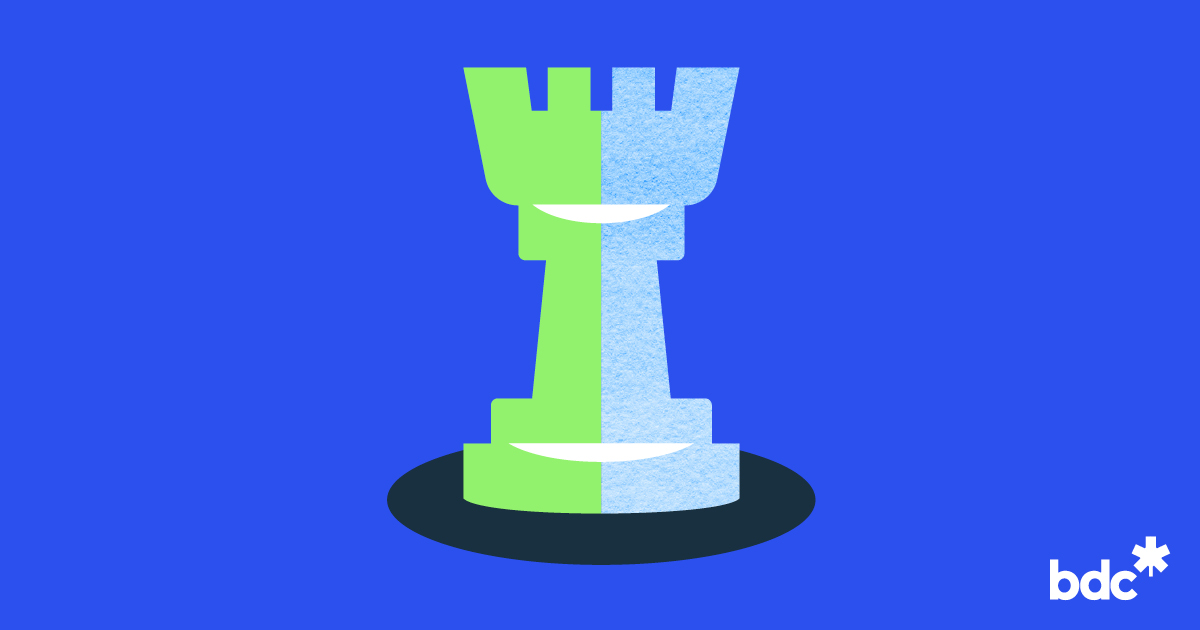How To Sell a Productized Service: Practical Guide and Tips (2025)

When an owner of a bakery prices and markets their treats, they simply sell a slice of cake, not two hours of their baking time. Most customers care more about the result than the time spent producing it.
The same often holds true when pricing and marketing your services, though it can be more challenging. Businesses offering intangible services may have pricing that feels unclear or unpredictable. However, applying a product-style pricing model can provide clarity. This approach is known as a productized service.
“Services can be kind of ephemeral,” says Chloe Sapienza, founder of Telescope, a corporate gifting service that leverages service productization. “There’s a need to understand each component piece of the service that you’re offering.”
By defining and packaging your service, you create transparency, set clear expectations, and offer a more consistent experience for your clients.
What is a productized service?
A productized service is a predefined, packaged service that’s sold like a physical good with a fixed price. Businesses build set packages with multiple components, charging an outcome-based fee instead of billing by the hour or for each element.
Companies can adopt different models for productized services. You could create bundles for one-off projects or offer a recurring service at a fixed rate—think of a gardener who comes monthly to water plants, collect fallen leaves, cut the grass, and weed the beds.
You could also create turn-key assets for clients—essentially outsourcing an entire job to you, either on a one-off or recurring basis. For example, a web development agency may charge a flat fee for an ecommerce website including a homepage, product, FAQ, About, and landing pages, rather than charging for each hour worked.
To productize corporate gifting services, Telescope offers its entire service process as one flat-rate package. The company’s website breaks down the corporate gifting process into six parts. Clients pay a fixed price for a package including project planning, ideation and design, ordering inventory, production, fulfillment, and program development. This approach has helped Telescope improve its customer experience and relationships.
“The biggest thing that I want to convey to our customers is that sense of continuity, the sense that we’ve really created an all-in package for them and we’re helping them every step of the way,” says Chloe.
Benefits of productized services
Productizing services can make your business more efficient, profitable, and resilient. Some of the potential benefits include:
-
Shorter sales cycles. Customers seeking a complete, ready-to-go service are drawn to productized offerings with clear pricing and defined scope, making the sales cycle shorter and smoother. This eliminates the hassle of clients having to hire multiple professionals for each step and negotiate rates.
-
Better client relationships. Unlike hourly rate projects, which may run over budget, productized services offer a set price with a guaranteed outcome. Results are baked into the cost, so there’s no back and forth on finances.
-
Increased clarity and transparency for customers. Clearly defined services let clients know exactly what they will, and will not, receive at a fixed rate.
-
More predictable revenue. Just as clients know exactly how much they’re paying for projects, your business gains certainty on income per project.
-
Improved internal efficiency. Streamlined, repeatable processes keep projects on track and reduce distractions.
Industries that use service productization
Take a standard haircut appointment—it may involve a wash, consultation, haircut, and blowout. Technically, a hairdresser could charge for these services by the hour. But by creating bundles that appeal to most of the target customers, the hairdresser can estimate revenue better while ensuring their expenses are covered.
Productized services are common in industries where numerous tasks can be bundled to present clients with a flat fee.
Here are a few industries and fields where productized services are popular:
-
Specialist contractors and maintenance. From cleaning crews to HVAC repair, home-care services often create standard packages so customers understand costs upfront.
-
Creative services. Graphic design, copywriting, interior design, and video production involve numerous detailed processes. Creating packages with standard offerings makes it easy to pitch your services without creating custom quotes for each job.
-
Professional services. Accounting, web development, consulting, and software development firms may have product packages for standard services that involve little variation.
How to productize your service
- Set goals
- Determine deliverables
- Choose the right services
- Map your service process
- Set prices
- Market and sell your services
- Execute and refine
Moving toward a productized model can help your business increase service quality, attract potential clients, and better align with market demand. According to Chloe, it helped Telescope increase customer lifetime value (CLV), build client relationships, and boost profits.
“Over the first year, we increased [revenue] by 200%,” says Chloe.
These steps can point you in the right direction:
1. Set goals
Chloe recommends starting with defining what success looks like. Consider both internal factors and the customer experience. Ask yourself questions such as:
-
What would make it easier for my team to execute projects?
-
What customer behaviour do we want to encourage?
-
How can we increase revenue?
You can use your definition of success to set measurable goals for your productization process. Chloe urges businesses to think critically about their goals, adding that you’ll use them to make key business decisions.
“Pricing becomes much clearer once you’ve outlined what the goal is,” she says.
2. Determine deliverables
Productized services are defined by what the client receives—not what the service provider does—so outline deliverables for each of your services. This step prepares you to map the service delivery process and will help you set clear expectations with clients.
Specify what is and isn’t included in each productized service. A design and branding firm might create the following deliverables for a logo design process, for example:
Deliverables
-
Three preliminary logo designs, including three design directions and primary color palettes
-
One finalized logo design, including a horizontal and vertical logo mark; favicon; primary and secondary color palette; and header, subheader, and body font selections
-
Final files, including finalized JPGs, PNGs, and working files (PSDs)
Not included
Chloe recommends performing a competitive analysis to see how similar businesses define their deliverables and package their services.
3. Choose the right services
Some services are better productization candidates than others. Consider the following factors to choose services:
-
Frequency. You need to understand a process to standardize it, so focus on popular services you’ve been hired to do many times. Productizing in-demand services maximizes return on investment (ROI) on your efforts.
-
Consistency. Select services that follow a repeatable process. Creating standard packages for more variable services requires more upfront work and increases the chances an unforeseen element will cost you money in the execution phase.
-
Market demand. Just like physical product development, service-based product development focuses on products with high sales potential among potential clients—also known as strong product-market fit.
-
Mission fit. Chloe recommends selecting services aligned with your interests, available resources, and business focus. “If you’re adding on new services, make sure that they complement your business model,” she says. “That they’re something you actually want to do.”
4. Map your service process
Create a complete picture of the service delivery process. Chloe recommends getting as granular as you can.
“We started by breaking our services down into the smallest components possible to really try to understand them,” she says.
Your delivery process will depend on your service type and business model. Here’s a non-exhaustive list of tasks you might include:
-
Onboarding
-
Discovery and fact-finding
-
Research
-
Brainstorming
-
Design and development
-
Internal review and revision cycles
-
Presentation of findings, designs, or solutions
-
Client-involved revision cycles
-
Final product delivery
-
Invoicing
Documenting each element helps you refine, price, and execute services. Once you’ve mapped your process, review for redundancies and inefficiencies.
5. Set prices
Use your process map to develop a pricing structure that reflects a service’s cost to your business. Here are two common approaches:
-
Estimate time. Calculate total project time and multiply the figure by your standard hourly fee to arrive at the total labor cost for a project. Then estimate the project’s material or software expenses, apply your standard markup, and add this figure to calculate the final service price.
-
Estimate volume. In this approach, pricing is determined by adding your revenue target and expenses. Then divide the sum by the number of services you expect to be able to complete over a given period. If you offer multiple service types, scale relative prices to reflect project demands.
Compare your prices to other competitors in your industry. If your prices are significantly lower, consider raising them to avoid client skepticism. If your prices run high, consider whether a premium pricing strategy is the right fit for your business, or explore lowering your prices.
6. Market and sell your services
List your services and develop a productized service marketing strategy, pulling from product marketing and service marketing approaches as needed. Best practices include clarifying deliverables, emphasizing your team’s expertise, and focusing on building customer relationships and delivering a high-quality experience.
The right ecommerce platform can reduce your workload and boost conversion rates, so look for a platform that meets your needs. Telescope is in the process of migrating to Shopify Plus.
“We’re trying to create a unified shopping experience,” says Chloe, adding that the migration will help the company more closely mimic a traditional product shopping experience.
Although Telescope uses fixed prices, it relies on employees to calculate complex project costs. The new user interface minimizes the need for employee involvement.
“Clients will be able to view the total all-in cost on an estimate as opposed to kind of having to ask us to put that together,” she says.
7. Execute and refine
The chance to improve and perfect processes is one of the major benefits of selling productized services.
“You can repeat a process over and over, honing in on services and getting them into a fixed bubble,” says Chloe. “This makes it easier for your team to repeat them and produces a better outcome for your customer.”
As you work, pay close attention to the relationship between expectation and reality—i.e., any differences between your planned workflow and the actual service delivery process. Here are a few questions to ask yourself:
-
Does our service delivery process follow the plan?
-
When do we deviate from the planned process? Do these deviations add value for clients? Do they increase or decrease the demands on our business?
-
Are our time estimates and expense projections accurate? Where are we over or under budget?
If your discovery process always takes twice as long as projected, for example, you might remove steps, increase the time allotted, or find efficiencies. During a website development project, for example, if you often deliver a free landing page, add it to your standardized package and charge for it up front.
Tips for productizing services
Here are three tips to help your business productize services.
Know when to say no
Productized service providers can expect requests outside of project scope, and fielding them can be tricky. Chloe recommends business owners get comfortable turning down requests.
“Initially, the only real challenge that we were faced with was having to say no to certain customers,” she says, “but if it means that you’re providing a better service overall, I think every business owner knows that that’s the winning choice.”
Chloe also points out that in some cases, accommodating an out-of-scope ask is a good business decision to learn if you adjust your service packages.
“We’ve said yes to someone to see if that was a good option for our service offering,” says Chloe. “Then it never came up again, or it ended up being incredibly inefficient for the customer and for us.”
Test your service model
Although many productized service businesses adjust service pricing and packaging over time, Chloe suggests approaching changes with caution.
“You don’t want to change pricing on a customer by surprise or have it happen frequently, especially for a service,” she says.
To protect your brand reputation, she suggests using A/B testing or a soft launch strategy to test-drive your service model. Chloe’s team used this strategy to gauge customer responses to different package configurations, allowing the company to maximize consistency after launch.
Use the right tools
Software tools can simplify the process of selling and delivering productized services. Telescope’s Shopify Plus migration, for example, will help the company simplify sales and marketing processes and add value for clients.
“We’re building client dashboards that improve access to metrics and allow clients to allocate inventory,” says Chloe.
The right tools will depend on your industry, service model, and business needs. Start by reaching out to your ecommerce platform provider to see how it can support the productization process. Productized service businesses can also use customer relationship management (CRM) software to improve customer relationships. Project management platforms can visualize the service delivery process and monitor internal workflows.
Productized service FAQ
What does productized mean?
To productize something is to make it into a product. Productizing a business idea is the process of developing the product the business will sell, and productizing a service is the process of standardizing the service and offering it for sale as a discrete unit at a fixed price.
Can a service also be a product?
An intangible service can be productized, which means that it is packaged and sold like a product. A flat-fee interior design service package is an example of a productized service.
What are the benefits of productizing services?
Here are six potential benefits of productizing services versus other service business models, such as hourly rates:
- Shorter sales cycles
- Better client relationships
- Increased clarity and transparency for customers
- More predictable revenue
- Improved internal efficiency
- Higher quality products
link


:max_bytes(150000):strip_icc()/GettyImages-1465358967-9c71aa0314db4e48af8f808dc7c71ce8.jpg)



